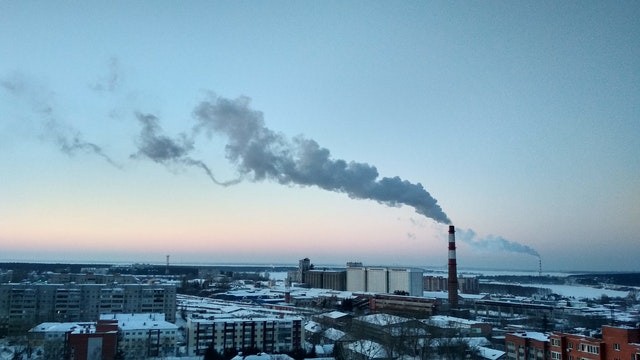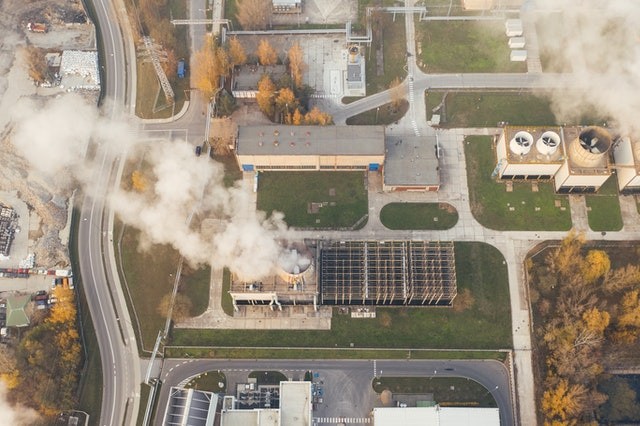After Nature World News reported about Earth's oceans storing immense heat, new study have shown how the planet may not be similar again after the next 20-30 years.
Earth may have the profound ability to quickly take in close to one-third of carbon emissions caused by plants and humans, but a new study indicates that this ability could be halved over the next 2 decades, no thanks to the present-day rate of global warming.

The study published in Science Advances journal was undertaken by researchers from the Woodwell Climate Research Center, Northern Arizona University, and the University of Waikato, New Zealand.
The study involved over 2 decades of collated data from measurement towers in each major biome worldwide. The team was able to identify a highly critical temperature tipping point, which is far beyond plants' ability to capture and store atmospheric carbon. Thus, the cumulative effect, known as the 'land carbon sink' plunges as the temperature continues to skyrocket.
Sharp Declines in Photosynthesis Detected Beyond Specific Temperatures
Science has already revealed that the activity of soil microbes and land plants known as the terrestrial biosphere is primarily responsible for most of the Earth's breathing as it silently exchanges oxygen and carbon dioxide. Ecosystems worldwide absorb carbon dioxide via photosynthesis and release it to the atmosphere via the respiration of plants and microbes.
However, these past few decades have revealed that the biosphere has absorbed far more carbon than it has released, thereby extenuating climate change. This may not continue, especially as this temperature continues to spread rapidly across the planet. The researchers happened to detect a temperature threshold after which carbon uptake by plants slows down and carbon release accelerates.
Lead author and postdoctoral researcher at Northern Arizona University, Kathryn Duffy, detected the sharp declines in photosynthesis beyond this temperature threshold in almost every biome worldwide. This observation was made after removing other effects such as sunlight and water.
Duffy has this to say about this discovery "The Earth has a fever that is growing steadily, and just like what happens to the human body, we know each biological process has a wide range of temperatures at which it performs optimally and most desirably, and one beyond which function starts deteriorating. "So, we wanted to know how much these plants can withstand"

This Research, The First to Detect Temperature Threshold
This research was the first to detect the specific temperature threshold for photosynthesis from the observational data at a broad scale. Although temperature thresholds for respiration and photosynthesis have been primarily studied in labs, the Fluxnet data provides a window into what the Ecosystems around the world are experiencing as well as how they are responding.
Duffy had to team up with the researchers at the University of Waikato and at Woodwell Climate, who developed a new approach of late known as MMRT or MacroMolecular Rate Theory to address the question. The basis of this new approach is rooted in the principles of thermodynamics. The use of MMRT allowed scientists to generate temperature curves for each major biome as well as the globe.
The results of this study were quite horrifying. The scientists discovered that temperature peaks for carbon uptake have already been exceeded in nature with no temperature check on respiration. That is 28 degrees Celsius for C4 plants and 18 degrees Celsius for the more prevalent C3 plants.
According to a biologist at the University of Waikato and co-author of the study, Vic Arcus, the most striking matter this analysis revealed is that the temperature optima for photosynthesis in every ecosystem were incredibly low. The findings suggest that temperature increases above 18 degrees Celsius could be potentially detrimental to a planetary carbon sink.
"The land carbon sink won't continue to offset emissions or buy us time without controlling warming to remain below or at the levels established in the Paris Climate Accord," says the co-author.
RELATED ARTICLE - Agrivoltaics: The Answer to Water Demand, Carbon Emissions and Rural Areas
For more news, updates about earth and related stories, don't forget to follow Nature World News!
© 2025 NatureWorldNews.com All rights reserved. Do not reproduce without permission.





